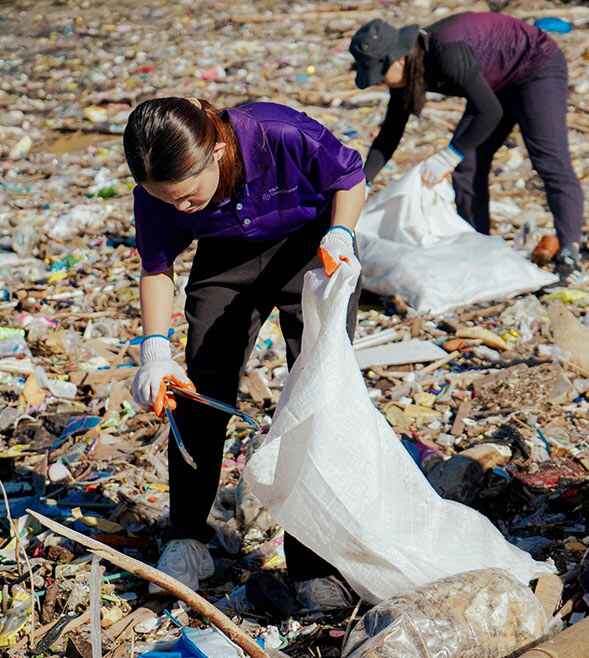-
Audit approach overview
Our audit approach will allow our client's accounting personnel to make the maximum contribution to the audit effort without compromising their ongoing responsibilities
-
Annual and short period audit
At P&A Grant Thornton, we provide annual and short period financial statement audit services that go beyond the normal expectations of our clients. We believe strongly that our best work comes from combining outstanding technical expertise, knowledge and ability with exceptional client-focused service.
-
Review engagement
A review involves limited investigation with a narrower scope than an audit, and is undertaken for the purpose of providing limited assurance that the management’s representations are in accordance with identified financial reporting standards. Our professionals recognize that in order to conduct a quality financial statement review, it is important to look beyond the accounting entries to the underlying activities and operations that give rise to them.
-
Other Related Services
We make it a point to keep our clients abreast of the developments and updates relating to the growing complexities in the accounting world. We offer seminars and trainings on audit- and tax-related matters, such as updates on Accounting Standards, new pronouncements and Bureau of Internal Revenue (BIR) issuances, as well as other developments that affect our clients’ businesses.
-
Tax advisory
With our knowledge of tax laws and audit procedures, we help safeguard the substantive and procedural rights of taxpayers and prevent unwarranted assessments.
-
Tax compliance
We aim to minimize the impact of taxation, enabling you to maximize your potential savings and to expand your business.
-
Corporate services
For clients that want to do business in the Philippines, we assist in determining the appropriate and tax-efficient operating business or investment vehicle and structure to address the objectives of the investor, as well as related incorporation issues.
-
Tax education and advocacy
Our advocacy work focuses on clarifying the interpretation of laws and regulations, suggesting measures to increasingly ease tax compliance, and protecting taxpayer’s rights.
-
Business risk services
Our business risk services cover a wide range of solutions that assist you in identifying, addressing and monitoring risks in your business. Such solutions include external quality assessments of your Internal Audit activities' conformance with standards as well as evaluating its readiness for such an external assessment.
-
Business consulting services
Our business consulting services are aimed at addressing concerns in your operations, processes and systems. Using our extensive knowledge of various industries, we can take a close look at your business processes as we create solutions that can help you mitigate risks to meet your objectives, promote efficiency, and beef up controls.
-
Transaction services
Transaction advisory includes all of our services specifically directed at assisting in investment, mergers and acquisitions, and financing transactions between and among businesses, lenders and governments. Such services include, among others, due diligence reviews, project feasibility studies, financial modelling, model audits and valuation.
-
Forensic advisory
Our forensic advisory services include assessing your vulnerability to fraud and identifying fraud risk factors, and recommending practical solutions to eliminate the gaps. We also provide investigative services to detect and quantify fraud and corruption and to trace assets and data that may have been lost in a fraud event.
-
Cyber advisory
Our focus is to help you identify and manage the cyber risks you might be facing within your organization. Our team can provide detailed, actionable insight that incorporates industry best practices and standards to strengthen your cybersecurity position and help you make informed decisions.
-
ProActive Hotline
Providing support in preventing and detecting fraud by creating a safe and secure whistleblowing system to promote integrity and honesty in the organisation.
-
Accounting services
At P&A Grant Thornton, we handle accounting services for several companies from a wide range of industries. Our approach is highly flexible. You may opt to outsource all your accounting functions, or pass on to us choice activities.
-
Staff augmentation services
We offer Staff Augmentation services where our staff, under the direction and supervision of the company’s officers, perform accounting and accounting-related work.
-
Payroll Processing
Payroll processing services are provided by P&A Grant Thornton Outsourcing Inc. More and more companies are beginning to realize the benefits of outsourcing their noncore activities, and the first to be outsourced is usually the payroll function. Payroll is easy to carve out from the rest of the business since it is usually independent of the other activities or functions within the Accounting Department.
-
Our values
Grant Thornton prides itself on being a values-driven organisation and we have more than 38,500 people in over 130 countries who are passionately committed to these values.
-
Global culture
Our people tell us that our global culture is one of the biggest attractions of a career with Grant Thornton.
-
Learning & development
At Grant Thornton we believe learning and development opportunities allow you to perform at your best every day. And when you are at your best, we are the best at serving our clients
-
Global talent mobility
One of the biggest attractions of a career with Grant Thornton is the opportunity to work on cross-border projects all over the world.
-
Diversity
Diversity helps us meet the demands of a changing world. We value the fact that our people come from all walks of life and that this diversity of experience and perspective makes our organisation stronger as a result.
-
In the community
Many Grant Thornton member firms provide a range of inspirational and generous services to the communities they serve.
-
Behind the Numbers: People of P&A Grant Thornton
Discover the inspiring stories of the individuals who make up our vibrant community. From seasoned veterans to fresh faces, the Purple Tribe is a diverse team united by a shared passion.
-
Fresh Graduates
Fresh Graduates
-
Students
Whether you are starting your career as a graduate or school leaver, P&A Grant Thornton can give you a flying start. We are ambitious. Take the fact that we’re the world’s fastest-growing global accountancy organisation. For our people, that means access to a global organisation and the chance to collaborate with more than 40,000 colleagues around the world. And potentially work in different countries and experience other cultures.
-
Experienced hires
P&A Grant Thornton offers something you can't find anywhere else. This is the opportunity to develop your ideas and thinking while having your efforts recognised from day one. We value the skills and knowledge you bring to Grant Thornton as an experienced professional and look forward to supporting you as you grow you career with our organisation.
Building on P&A Grant Thornton’s commitment to sustainability, embodied by its sea turtle mascot, P&AWI, the first article explores how the resilience and ecological balance these creatures represent parallels the critical role of sustainable finance in the Philippine banking sector. Now, this article introduces the Philippine Sustainable Finance Taxonomy Guidelines (SFTG) in February 2024 that marks a significant milestone in the country’s journey towards a sustainable future. Developed through the collaborative efforts of the Bangko Sentral ng Pilipinas (BSP), Securities and Exchange Commission (SEC), and Insurance Commission (IC), these guidelines aim to channel capital towards economic activities that further sustainability goals, such as reducing greenhouse gas (GHG) emissions and enhancing climate resilience. However, the implementation of the SFTG presents both challenges and opportunities for Philippine banks and their clientele.
Understanding the Philippine Sustainable Finance Taxonomy
The SFTG provides a framework for determining the environmental and social sustainability of economic activities. It serves as a guide for stakeholders, including issuers, investors, and financial institutions, to make informed investment and financing decisions. By aligning with the Philippine Sustainable Finance Guiding Principles, the SFTG promotes sustainable finance within the nation, focusing on key environmental objectives such as climate change mitigation and adaptation.
Key Objectives of the SFTG:
- Climate Change Mitigation: Activities that significantly reduce GHG emissions or enable others to do so are prioritized. This includes renewable energy projects, energy efficiency improvements, and sustainable transportation initiatives.
- Climate Change Adaptation: Activities that enhance resilience to the adverse impacts of climate change are also prioritized. This includes infrastructure projects designed to withstand extreme weather events and initiatives that protect vulnerable ecosystems.
- Do No Significant Harm (DNSH): Activities contributing to one environmental objective should not cause significant harm to another. This principle ensures a balanced approach to sustainability, preventing unintended negative consequences.
- Minimum Social Safeguards (MSS): Compliance with national social regulations is mandatory, ensuring that activities promoting environmental objectives do not harm social aspects such as human rights, labor rights, and community well-being.
Challenges for Philippine Banks
While the SFTG aims to foster a sustainable finance ecosystem, its implementation poses several challenges for Philippine banks, namely:
- Compliance and Reporting Requirements: The SFTG introduces stringent compliance and reporting requirements. Banks must ensure that their financed activities align with the taxonomy’s criteria, which involves thorough assessments and documentation. This can be resource-intensive, requiring significant investments in systems, processes, and personnel to manage compliance effectively.
- Risk Management: The transition to sustainable finance involves managing both physical and transition risks. Physical risks include the direct impacts of climate change, such as extreme weather events, while transition risks arise from the shift to a low-carbon economy. Banks must develop robust risk management frameworks to identify, assess, and mitigate these risks, which can be complex and challenging.
- Client Engagement and Education: Many clients, particularly small and medium-sized enterprises (SMEs), may lack awareness or understanding of the SFTG and its implications. Banks need to engage with their clients, providing education and support to help them align their activities with the taxonomy. This requires effective communication strategies and the development of tailored financial products and services.
- Data and Transparency: Accurate and reliable data is crucial for assessing the sustainability of economic activities. Banks must invest in data collection and analysis capabilities to ensure transparency and credibility in their reporting. This includes leveraging technology and collaborating with third-party verifiers to validate sustainability claims.
Impact on Bank Clientele
The implementation of the SFTG will have a significant impact on bank clientele, particularly in terms of access to finance and the need for adaptation.
- Access to Sustainable Finance: Clients whose activities align with the SFTG will have greater access to sustainable finance options, such as green bonds, sustainability-linked loans, and other financial products designed to support sustainable initiatives. This can provide a competitive advantage and open up new opportunities for growth and innovation.
- Increased Scrutiny and Accountability: Clients will face increased scrutiny regarding their environmental and social practices. Those who fail to meet the SFTG criteria may find it more challenging to secure financing. This underscores the importance of adopting sustainable practices and demonstrating compliance with the taxonomy’s requirements.
- Support for SMEs: The SFTG includes provisions to ensure that SMEs are not excluded from sustainable finance opportunities. A simplified assessment approach is provided for SMEs, allowing them to participate in sustainable finance initiatives without undue burden. This inclusivity is crucial for driving widespread adoption of sustainable practices across all sectors of the economy.
- Incentives for Sustainable Practices: Clients who align their activities with the SFTG may benefit from various incentives, such as lower interest rates, longer repayment terms, and access to government grants and subsidies. These incentives can help offset the costs of transitioning to sustainable practices and encourage more businesses to adopt environmentally and socially responsible strategies.
Opportunities for Philippine Banks
Despite the challenges, the SFTG also presents significant opportunities for Philippine banks:
- Market Differentiation: By embracing sustainable finance, banks can differentiate themselves in the market, attracting environmentally and socially conscious investors and clients. This can enhance their reputation and build long-term trust with stakeholders.
- Innovation and Product Development: The SFTG encourages the development of innovative financial products and services that support sustainable initiatives. Banks can leverage this opportunity to create new revenue streams and expand their product offerings, catering to the growing demand for sustainable finance solutions.
- Enhanced Risk Management: Implementing robust risk management frameworks to address climate-related risks can enhance the resilience of banks’ portfolios. This can lead to more stable and sustainable financial performance in the long term.
- Contribution to National Goals: By aligning their activities with the SFTG, banks can contribute to the Philippines’ national sustainability goals, including commitments under the Paris Agreement and the Sustainable Development Goals. This can position banks as key players in the country’s transition to a more sustainable economy.
The Philippine Sustainable Finance Taxonomy Guidelines (SFTG) represent a transformative step towards a sustainable future. While the implementation of the SFTG presents challenges for Philippine banks and their clientele, it also offers significant opportunities for growth, innovation, and market differentiation. By embracing sustainable finance, banks, which are uniquely positioned to influence sustainable economic, social, and governance change, can play a crucial role in driving positive change, supporting the country’s sustainability goals, and building a resilient and inclusive financial ecosystem.
From my perspective, the adoption of the SFTG is a subtle way of encouraging various stakeholders in the country to embrace sustainable practices without requiring them to formally report on their sustainability. If executed properly, it’s an empowering initiative for stakeholders. I believe that the benefits of the opportunities significantly surpass the challenges they present.
As the financial sector navigates this new landscape, collaboration, education, and innovation will be key to overcoming challenges and unlocking the full potential of sustainable finance. The journey towards a sustainable future is complex, but with the right strategies, commitment, and good leadership, Philippine banks can lead the way in creating a more sustainable and prosperous economy for all. The next article will delve into how leadership style has immense impact on sustainability, while driving meaningful progress and fostering a culture of sustainability within organizations.
As published in The Manila Times, dated 13 November 2024




